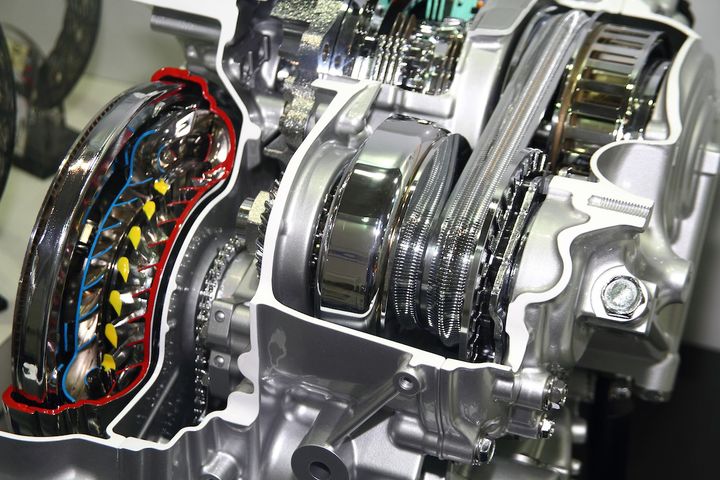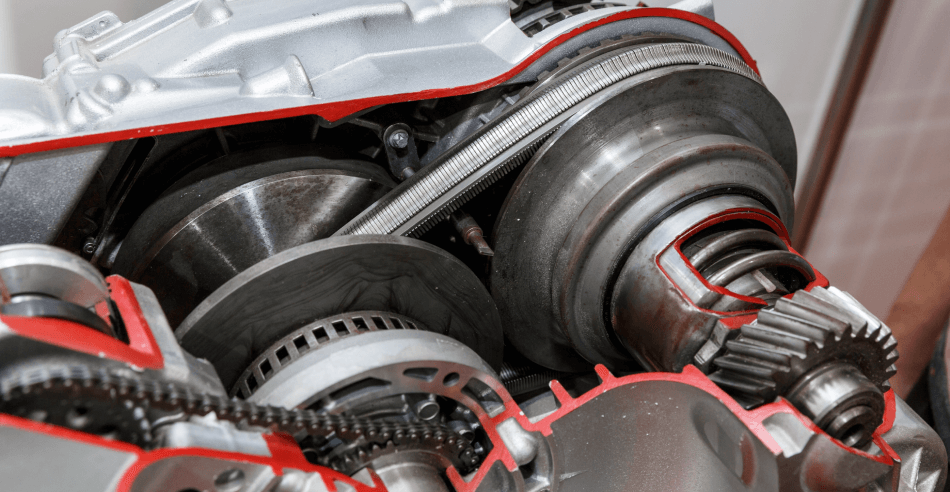


Continuously Variable Transmissions (CVTs) are a type of automatic transmission that have gained popularity in recent years due to their potential for improved fuel efficiency and smoother operation compared to traditional automatic transmissions. Unlike conventional automatic transmissions that use a fixed set of gears, CVTs work by using a system of pulleys and a metal belt or chain to provide an infinite number of gear ratios.

Before we dive into the reliability aspect, let's take a moment to understand what a CVT transmission is and how it works. Unlike traditional automatic transmissions with fixed gear ratios, CVTs employ a unique design that utilizes a pair of pulleys connected by a steel belt or chain. As the pulleys adjust their diameters, the effective gear ratio changes seamlessly, providing an infinite range of gear ratios. This innovative design allows for smoother acceleration, improved fuel efficiency, and a more responsive driving experience.
While CVTs offer several advantages, they are not immune to potential problems. Throughout my professional experience, I've encountered various issues that can arise with CVT transmissions. Here are some of the main causes:
| Cause | Description |
|---|---|
| Overheating | CVTs operate at higher temperatures compared to traditional transmissions, and excessive heat can damage the pulleys, belt, and other internal components, leading to premature wear and potential failure. Overheating can be caused by factors such as towing heavy loads, frequent stop-and-go driving, or a malfunctioning cooling system. |
| Fluid Leakage and Contamination | Like any other transmission, CVTs rely on transmission fluid to lubricate and cool the internal components. Low fluid levels or contaminated fluid can cause excessive wear, slippage, and ultimately, transmission failure. Fluid leaks can occur due to worn seals, gaskets, or other components, while contamination can result from neglecting regular fluid changes or using the wrong type of fluid. |
| Mechanical Wear | Over time, the belt, pulleys, bearings, and other moving parts within the CVT can experience wear and tear. This mechanical wear can lead to slippage, shuddering, and eventual transmission failure if not addressed promptly. Factors like driving habits, mileage, and proper maintenance can influence the rate of wear on these components. |
As a mechanic, I follow a systematic approach to diagnose CVT transmission issues. Here are the steps I typically take:
Check transmission fluid level and condition (color, smell)
Listen for unusual noises (whining, grinding, etc.)
Observe for slippage, delayed acceleration, or jerking during acceleration
Check for leaks around the transmission
Scan for diagnostic trouble codes
| Issue | Signs |
|---|---|
| Overheating | Burning smell, slippage, transmission warning lights |
| Fluid Leakage | Low fluid level, puddles under the vehicle, staining around the transmission |
| Mechanical Wear | Slippage, shuddering, unusual noises |
Once the issue has been identified, the appropriate repair procedure can be undertaken. Here are some common repair approaches for CVT transmissions:
Replace the transmission fluid and filter
Inspect and replace the cooler lines if necessary
Check for proper operation of the cooling system (radiator, fans, etc.)
Locate and repair the leak source (seals, gaskets, etc.)
Replace the transmission fluid and filter
Disassemble the transmission and inspect for worn components
Replace the belt, pulleys, bearings, or other worn parts as needed
Reassemble and refill with fresh transmission fluid
Follow the manufacturer's repair procedures and specifications
Use only the recommended transmission fluid for your vehicle
Ensure proper alignment and adjustment of components during reassembly
While repairs can address immediate issues, preventive maintenance is key to ensuring the long-term reliability of your CVT transmission. Here are some tips to help prevent recurring problems:

Follow the manufacturer's recommended service intervals for fluid changes and inspections
Use only the specified transmission fluid for your vehicle
Avoid excessive idling or high-load operation, which can cause overheating
Don't tow heavy loads or operate the vehicle outside its intended use
Warm up the transmission before driving, especially in cold weather
The cost of CVT transmission repair can vary widely depending on the extent of the damage and the specific repair required. Here are some general cost estimates:
| Repair Type | Cost Range |
|---|---|
| Fluid Change | $100 - $300 |
| Minor Repairs (seals, gaskets) | $300 - $800 |
| Major Repairs (belt, pulleys, bearings) | $1,500 - $3,500 |
| Complete Transmission Replacement | $3,000 - $7,000 (including labor) |
It's important to note that these costs are approximate and can vary based on your location, vehicle make and model, and the repair shop's labor rates. It's always recommended to get a detailed estimate from a reputable transmission repair shop before proceeding with any major repairs.
In my professional experience, CVT transmissions can be reliable when properly maintained and operated within their intended design parameters. However, like any mechanical system, they are susceptible to wear and potential issues, particularly if neglected or subjected to excessive strain.
By following the recommended maintenance schedules, using the correct transmission fluid, and avoiding excessive loads or high-temperature operation, you can help extend the lifespan of your CVT transmission. Additionally, addressing any issues promptly and seeking professional assistance from qualified mechanics can prevent minor problems from escalating into more costly repairs.
While the cost of CVT transmission repair can be substantial, it's often more economical than a complete replacement, especially for newer vehicles. By being proactive with maintenance and attentive to any warning signs, you can maximize the reliability and longevity of your vehicle's CVT transmission.
CVTs use a pulley system with a steel belt/chain to provide an infinite range of gear ratios, while traditional automatics have a fixed set of gear ratios. This allows for smoother acceleration and improved fuel efficiency in CVTs.
CVTs operate at higher temperatures, and overheating can be caused by factors like towing heavy loads, frequent stop-and-go driving, or a malfunctioning cooling system.
Low fluid levels or contaminated fluid can cause excessive wear, slippage, and ultimately, transmission failure in CVTs.
Signs of mechanical wear include slippage, shuddering, and unusual noises from the transmission.
The repair approach involves replacing the transmission fluid and filter, inspecting and replacing cooler lines if necessary, and ensuring proper operation of the cooling system.
Following the manufacturer's recommended service intervals for fluid changes and inspections, and using the specified transmission fluid, can help prevent recurring issues.
A complete CVT transmission replacement can cost between $3,000 and $7,000, including labor.
Yes, avoiding excessive idling, high-load operation, and towing heavy loads can help extend the lifespan of a CVT transmission.
If warning signs like slippage, shuddering, or unusual noises are noticed, it's recommended to address the issues promptly and seek professional assistance from qualified mechanics.
Yes, by following the recommended maintenance schedules, using the correct transmission fluid, and avoiding excessive strain, it is possible to extend the lifespan of a CVT transmission.

Sarah isn't your average gearhead. With a double major in Mechanical Engineering and Automotive Technology, she dived straight into the world of car repair. After 15 years of turning wrenches at dealerships and independent shops, Sarah joined MICDOT to share her expertise and passion for making cars run like new. Her in-depth knowledge and knack for explaining complex issues in simple terms make her a valuable asset to our team.








